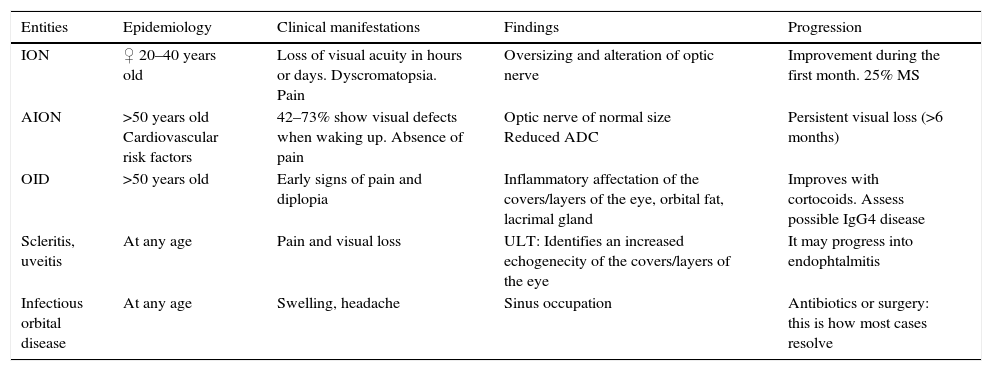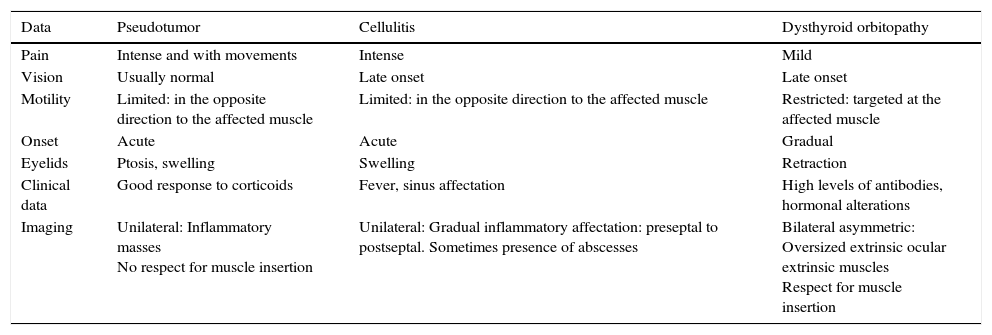Nontraumatic emergencies of the head and neck represent a challenge in the field of neuroradiology for two reasons. As explained in the first part of this update, these entities affect an area where the thorax joins the cranial cavity and can thus compromise both structures; second, they are uncommon, so they are not well known.
Maintaining the same approach as in the first part, focusing on the clinical presentations in the emergency department rather than on the anatomic regions affected, we will study the entities that present with two patterns: those that present with a combination of cervical numbness, dysphagia, and dyspnoea and those that present with acute sensory deficits. In the latter group, we will specifically focus on visual deficits, because this is the most common symptom that calls for urgent imaging studies.
Las urgencias no traumáticas de cabeza y cuello son un reto en el campo neurorradiológico por los motivos referidos en la primera parte: su área de afectación, en la encrucijada del tórax y la cavidad craneal, y su baja incidencia en la urgencia, lo que supone que sean poco conocidas.
Manteniendo el mismo enfoque que en la actualización previa, a partir de las formas clínicas de presentación en el ámbito de la urgencia, en lugar de la división por regiones anatómicas estudiaremos las entidades que se presentan con patrones que combinan tumefacción cervical, disfagia y disnea, y los déficits agudos de los sentidos. Dentro de este último grupo, el síntoma al que haremos referencia específica será el déficit visual, puesto que es el que de forma más frecuente requiere estudio radiológico urgente.


















